Many toy soldier makers included in their production Indians or Native Americans. The huge production of Hollywood films with far west theme is probably the main reason for this option.
Bibliography:
Johnson, Michael G. & Jonathan Smith. American Indian Tribes of the Southwest. Men-at-Arms 488. Osprey Publishing. 48pp.
Johnson, Michael G. & Jonathan Smith. North American Indian Tribes of the Great Lakes. Men-at-Arms 467. Osprey Publishing. 48pp.
Airfix
Airfix produced a few references of Indians that were copied by Chinese and Hong Kong companies.
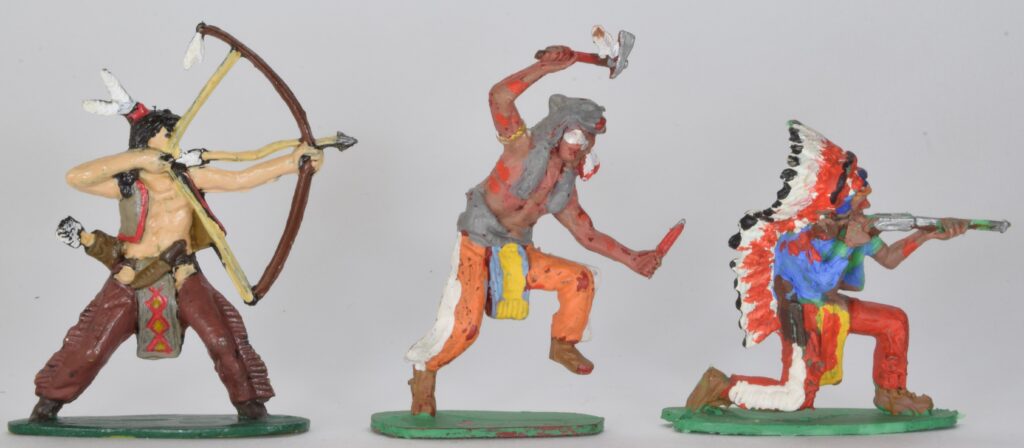
The first figure is a copy whilst the other two are probably original painted with very bright colours.
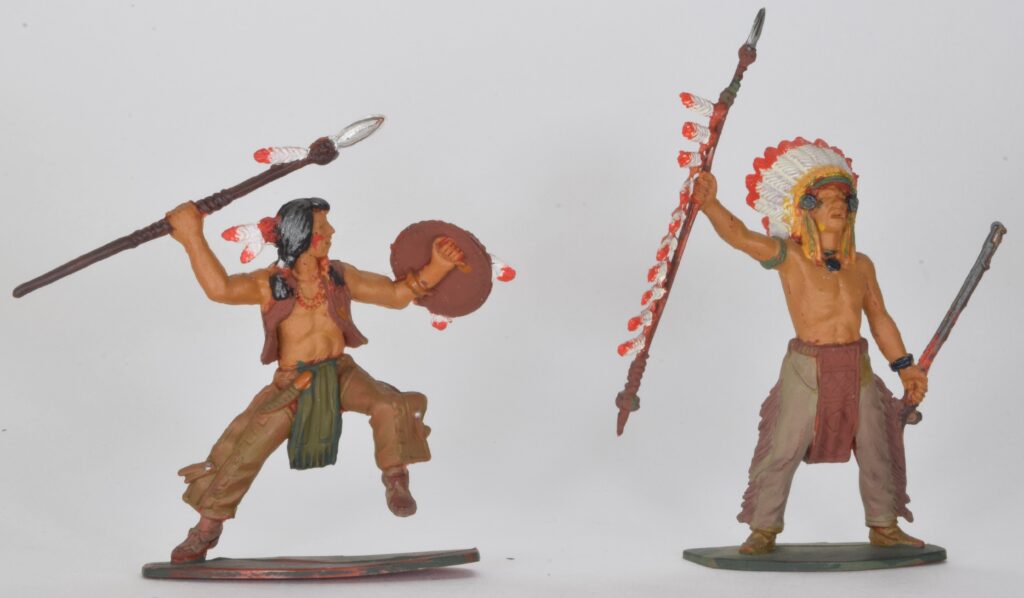
These figures were painted by João Catavira.
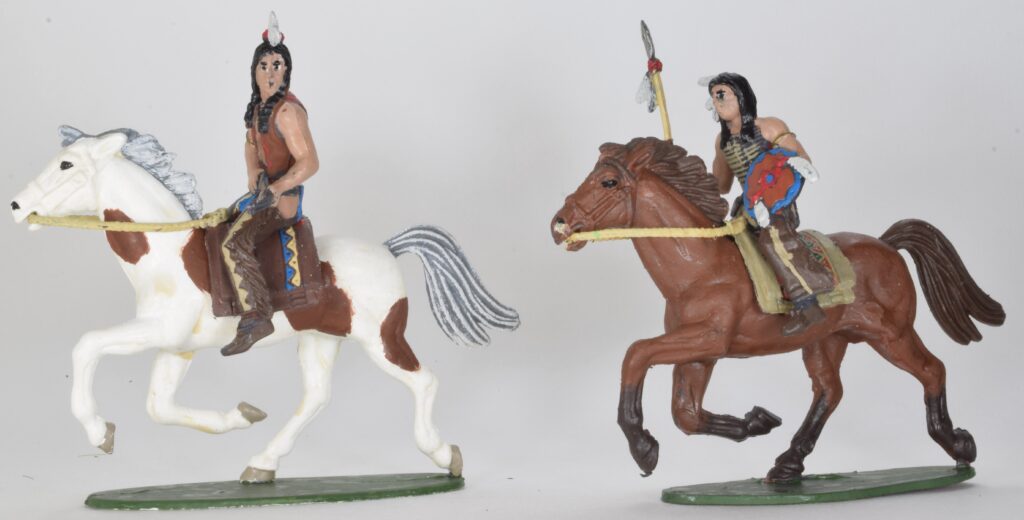
These figures are copies and engraved under the base “Hong Kong”. Painted by me.
Armies in Plastic
French & Indian War 1754-1763
5547 – North-eastern Woodland Indians. Set #1
These figures were sculpted with the historical aspect in mind.
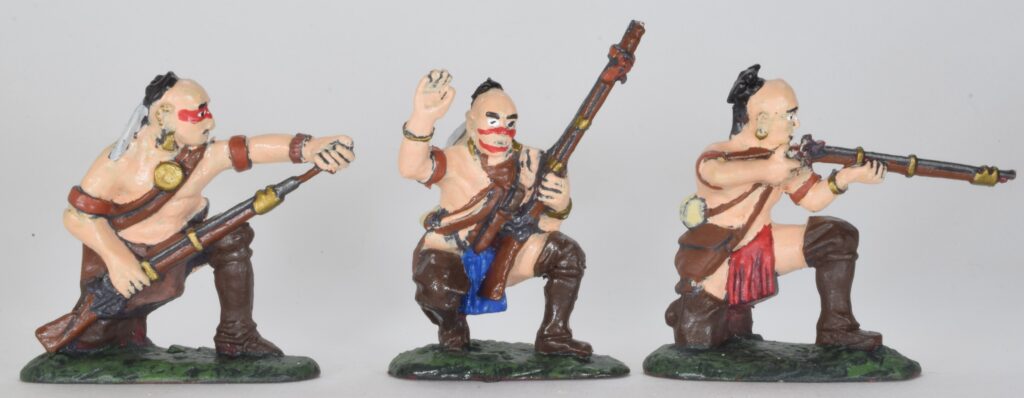
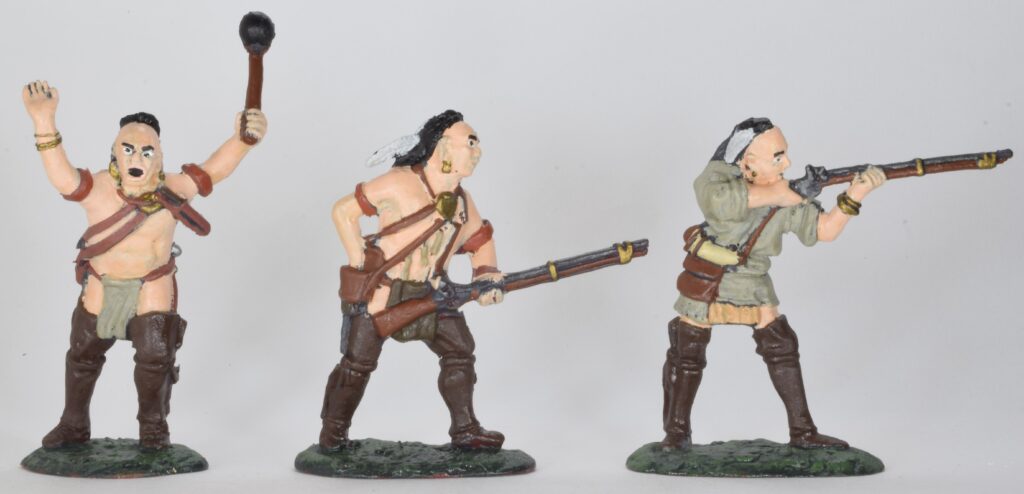
Britains
Britains made many Indian figures of generally very good quality, mainly those that were produced previously under the brand “Herald”.
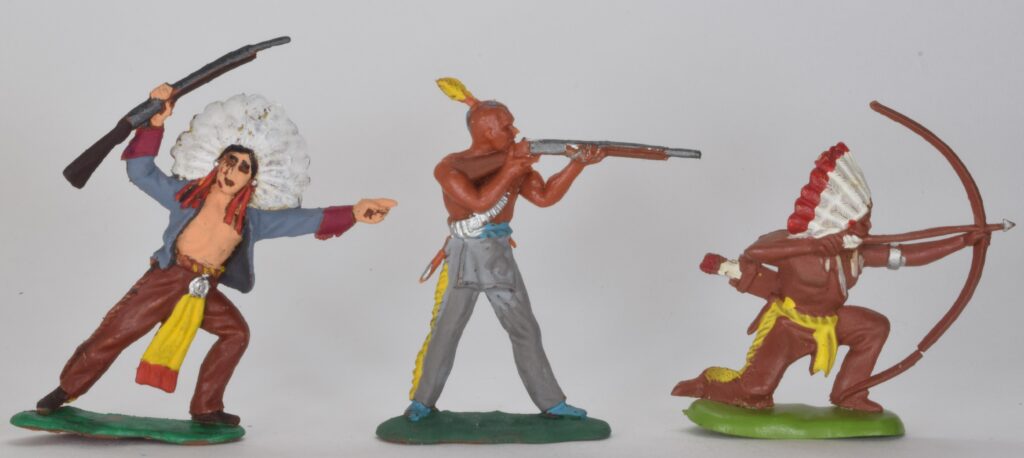
These are some of the first Indian figures made by Britains. Reference numbers are 26, 24 and 25. Figures were introduced in 1953.
Deetail
The Deetail range included various groups of figures from 1972 onwards.

These figures are numbered 668, 669, 671 (the head is 670) and 672 in Peter Cole book on Britains/Herald plastic figures and were introduced in 1972. I added some paint on the second figure. I always thought that the sculpting quality deserved a much better paint job.

Introduced in 1976 these figures seems to represent the Apache people (837, 838, 839, 841, 842). The right arm of second and third figures were the same and moulded separate (843). The colour options for these figures are arguable (imho). Unfortunately the pistol in the fourth figure is broken.
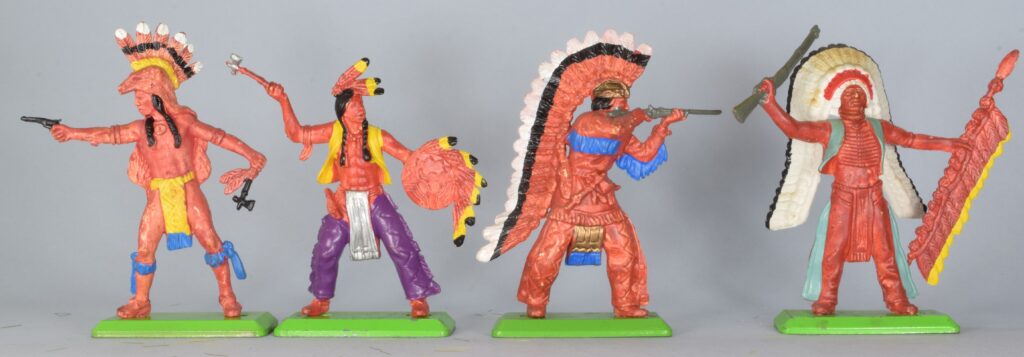
A new series was introduced in 1982 (996, 997, 998, 999).
These figures showed a brown dominated paint scheme, even in feathers…
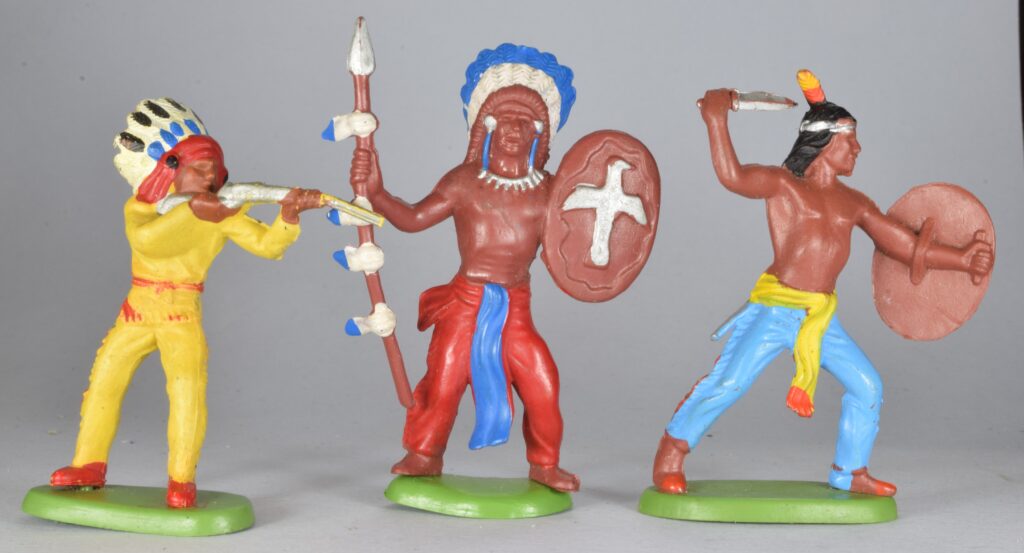
These figures were only produced in Hong Kong. Reference numbers in Peter Cole book are 468, 420 and 469. The first and third figure were produced between 1967 and 1976. The second figure was introduced in 1966 and deleted in 1976.
Crescent
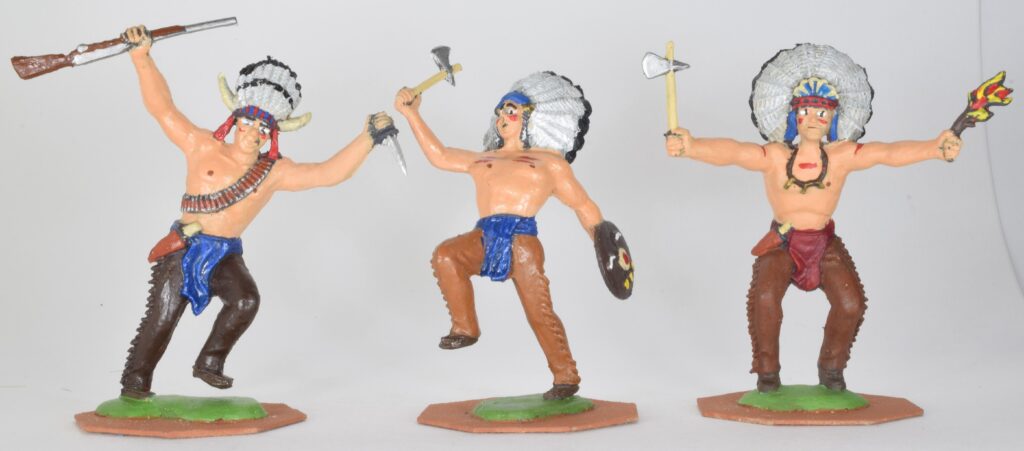
The figures are very dynamic. References T11, T12, T13.
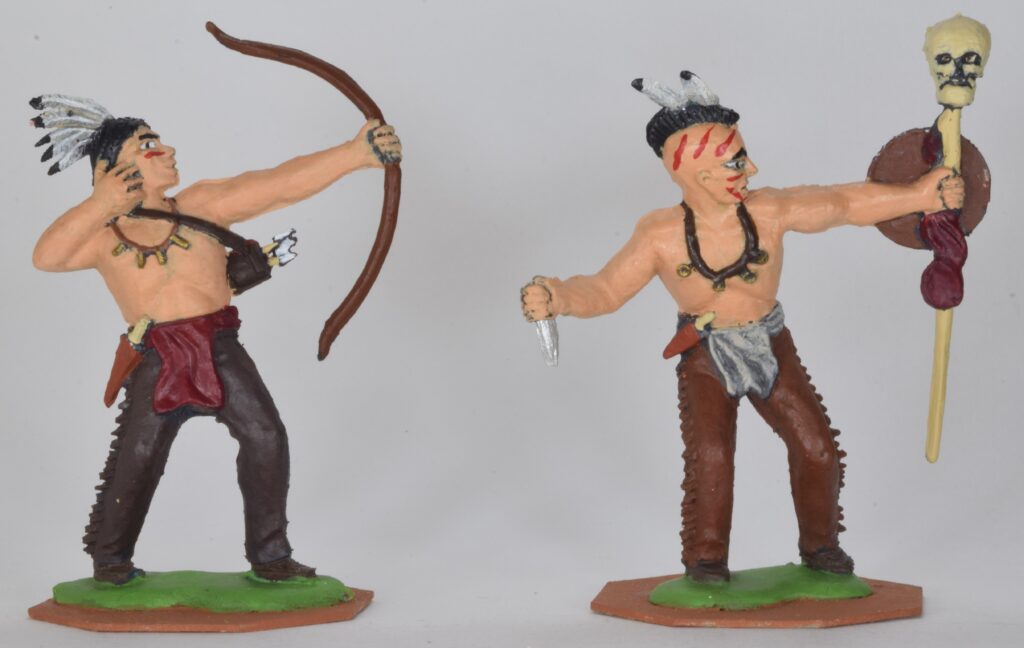
The last figure is probably a Xamã with a skull. References, T10, T15. Figures painted by me.
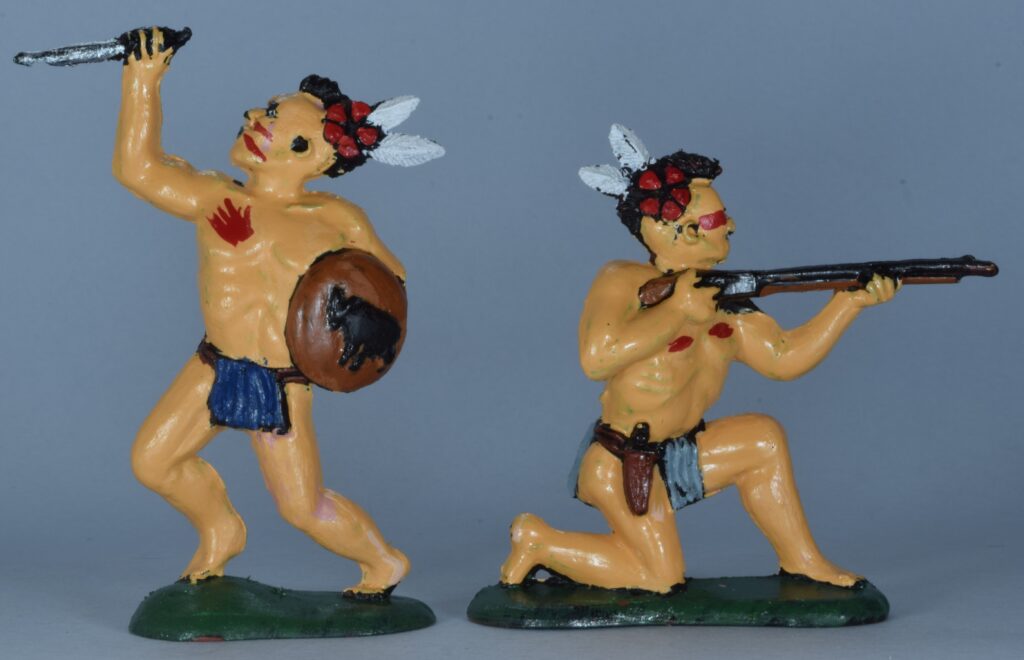
This figures are a bit chunky and have a kind of flower (?) to secure the feathers. References are 18T and T20.
Dulcop
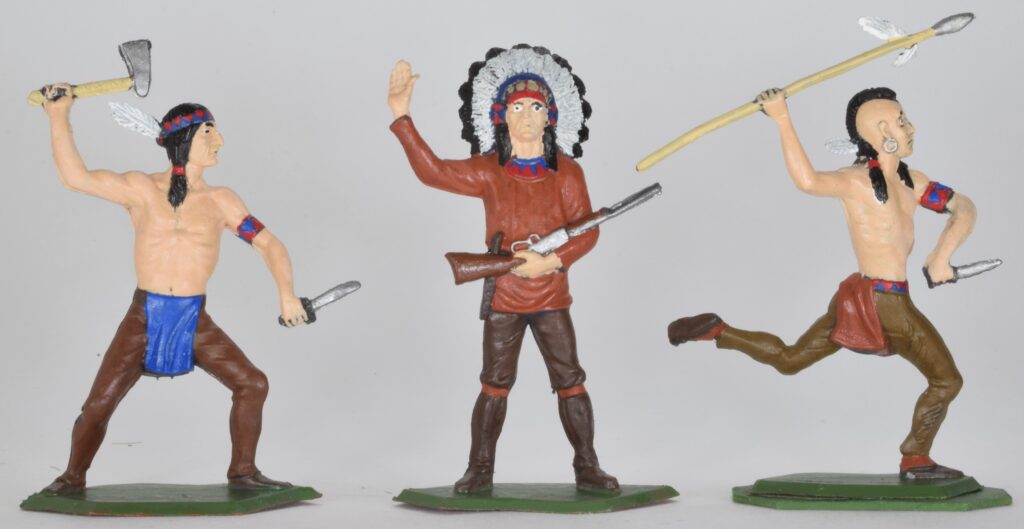
Figures painted by me. The left arms with a knief are in a strange pose.
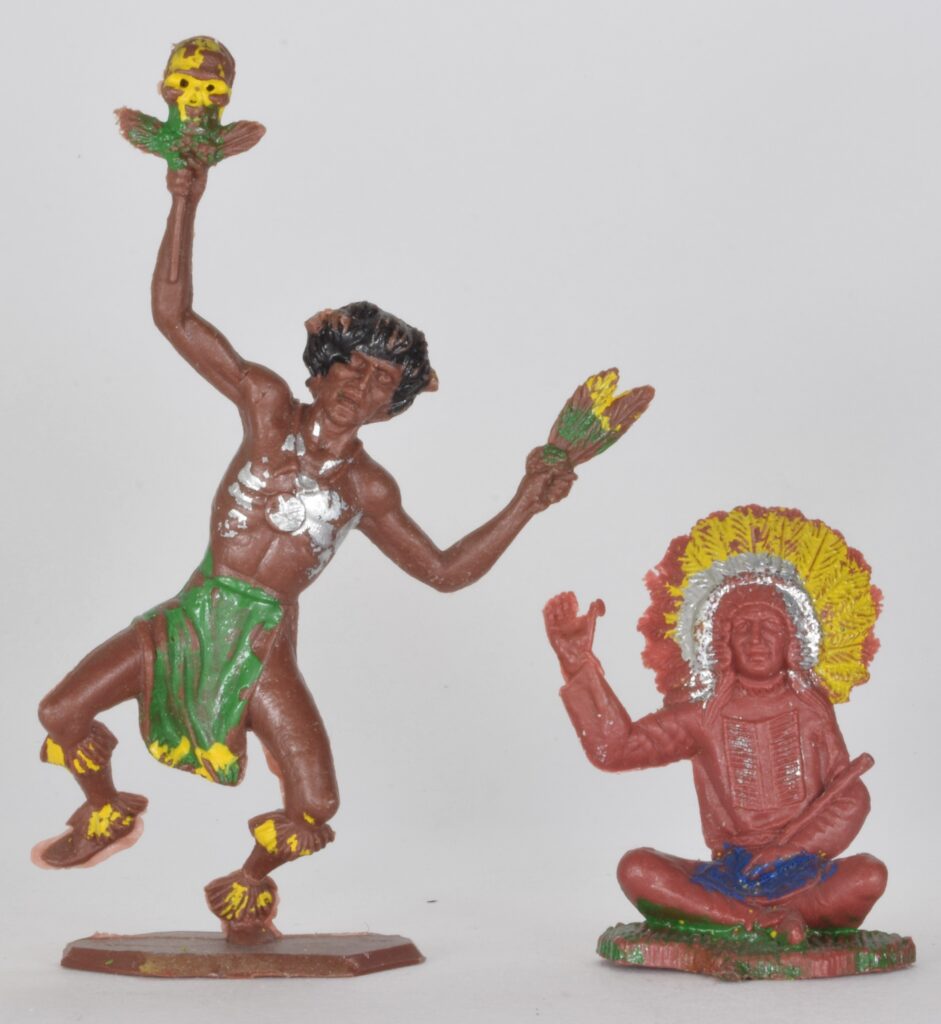
These figures were originally painted and the yellow feathers are a bit strange. The Xamã dances with a human skull. Perhaps I will paint them some day as I don´t like the original paint job.
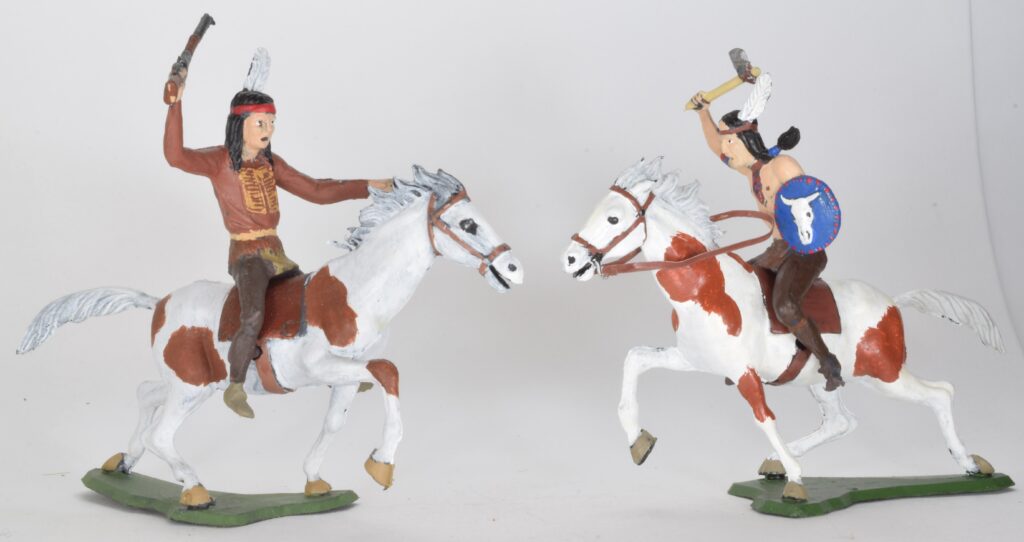
Two Indians on horse back that I have in my collection from this Italian company. I think they are nice figures very dynamic. Painted by me.
Fontanini
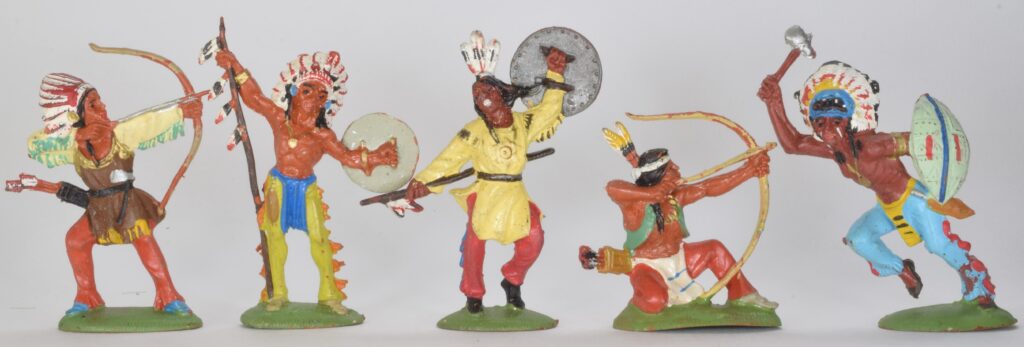
This Italian company made very nice Indians, originally painted in bright colours. The last figure carries a shield whose shape is probably more related to Africa then to America. The reference numbers are; 57, 67, 54, 59, 63.
Gulliver
This Brazilian maker specialized in copies of Atlantic figures. They were very common in Portugal shops. Under the bases the logo of the firm in engraved. The figures were factory painted. The Atlantic reference is indicated in the title.
1209 Sitting Bull
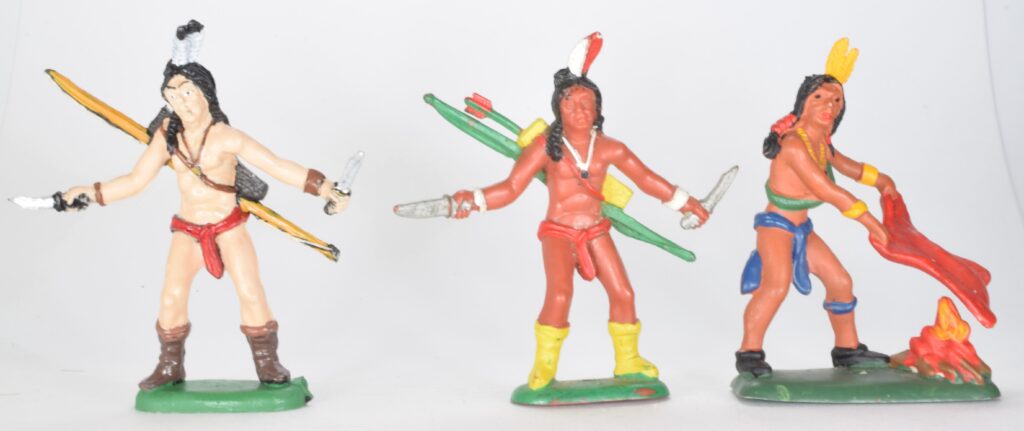
The first figure is from Atlantic and was painted by me.

The second figure is from Atlantic and was painted by me.
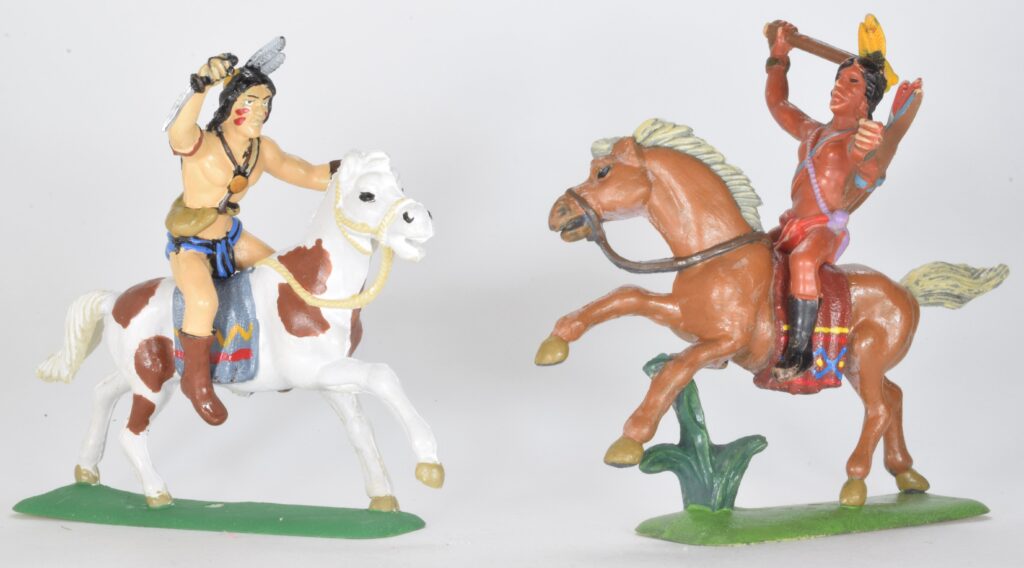
1212 Sioux Camp
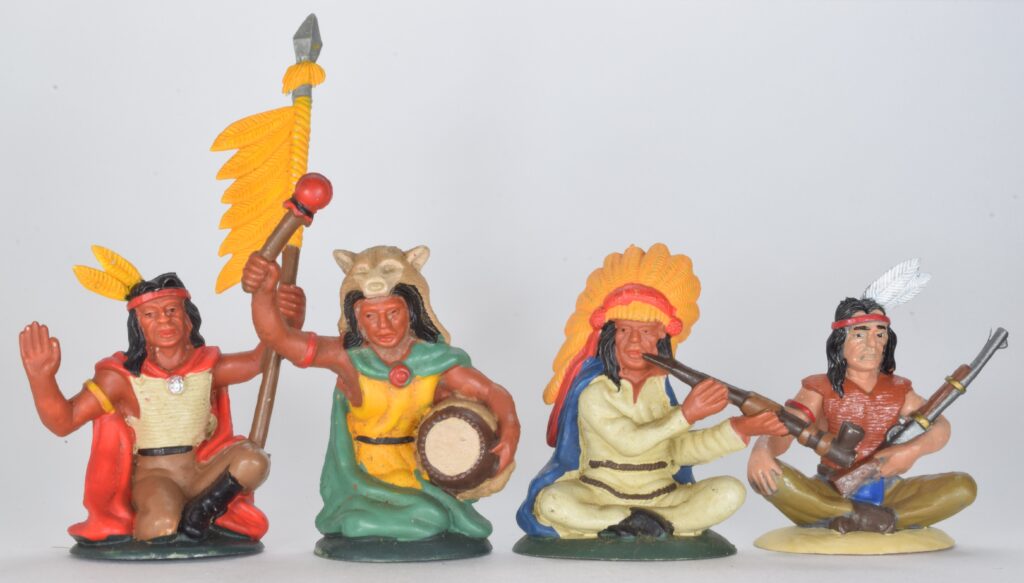
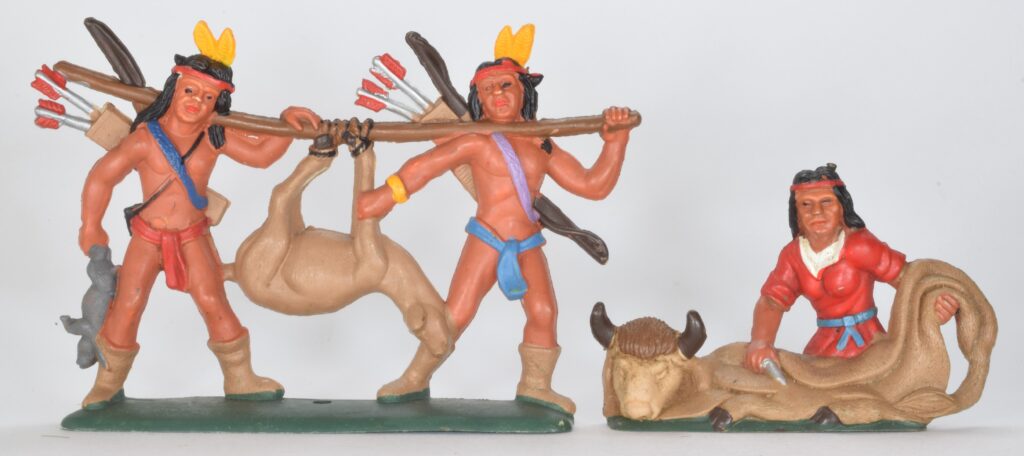
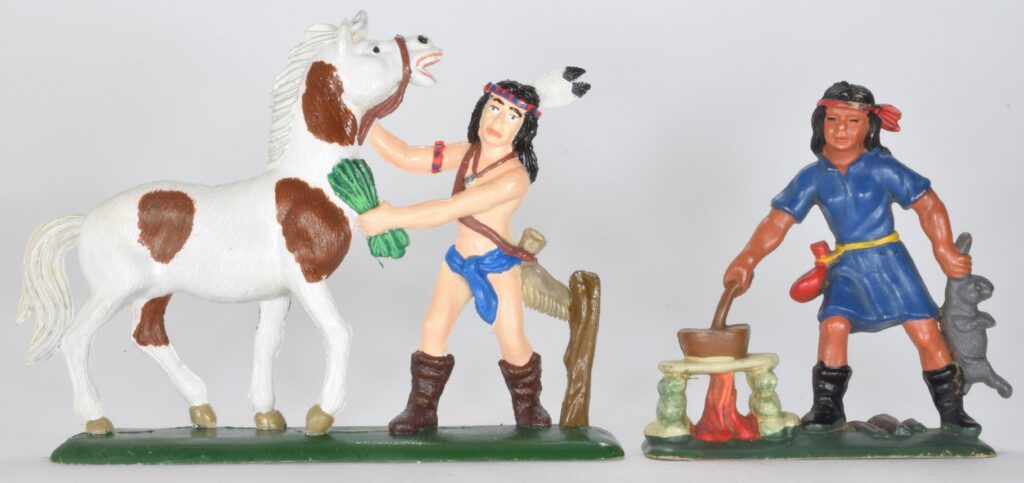
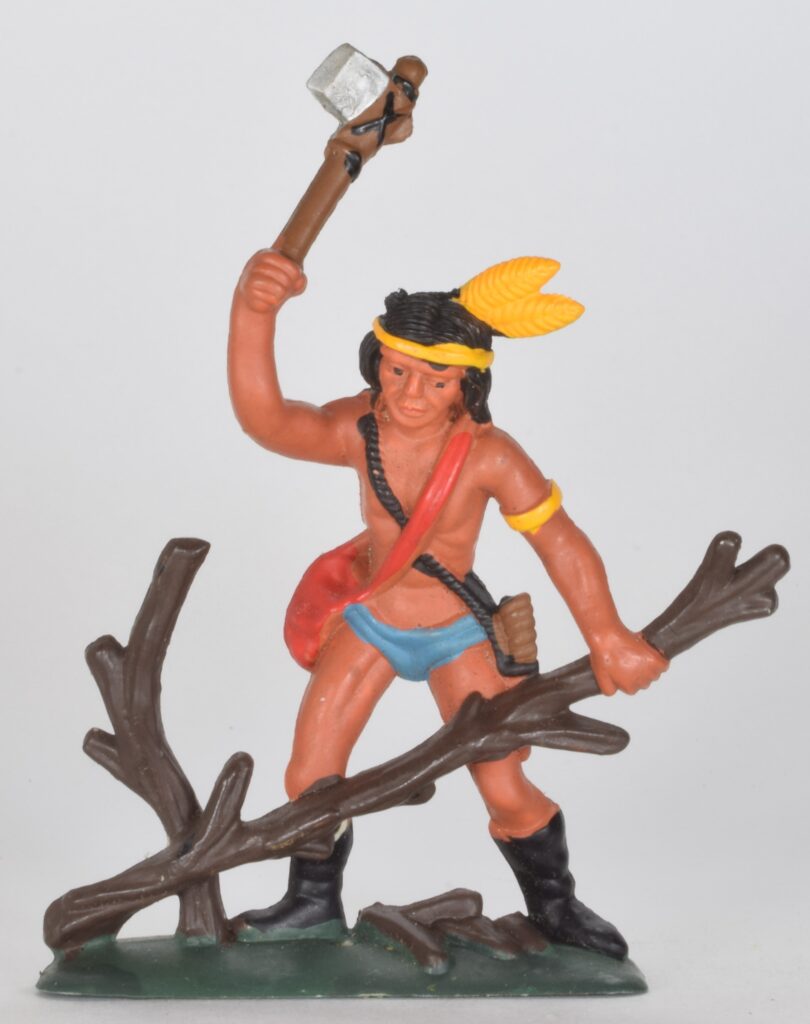
Jean Hofler / W. Germany
Very dynamic figures with a certain toy appeal. As usual with this maker the base has bush.
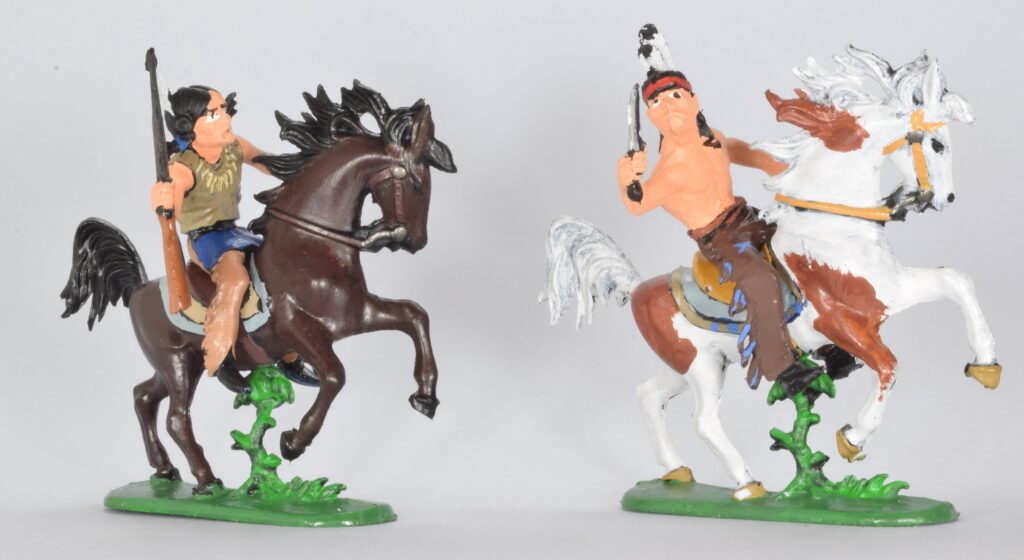
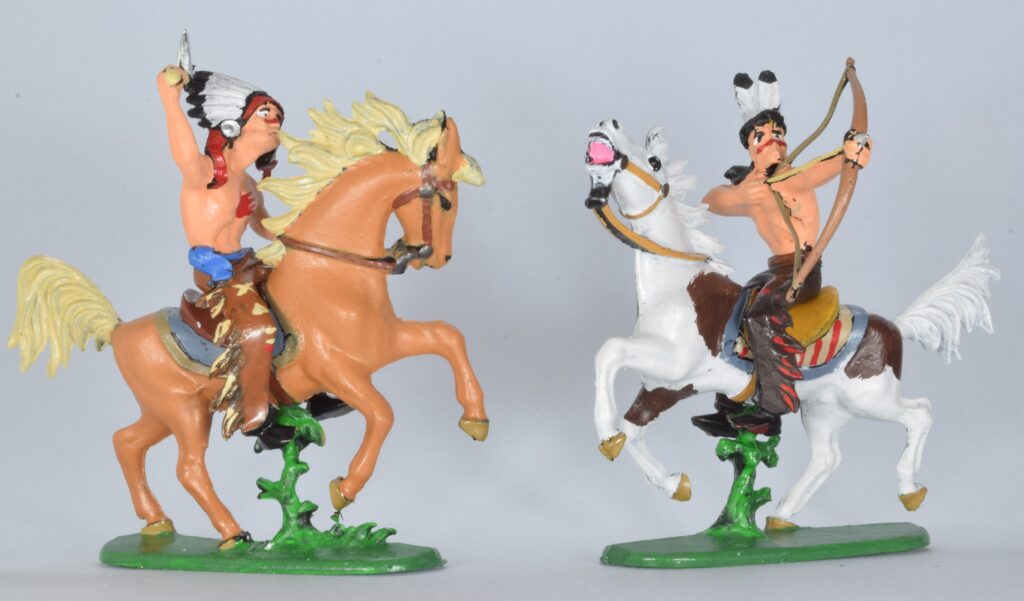
Marx
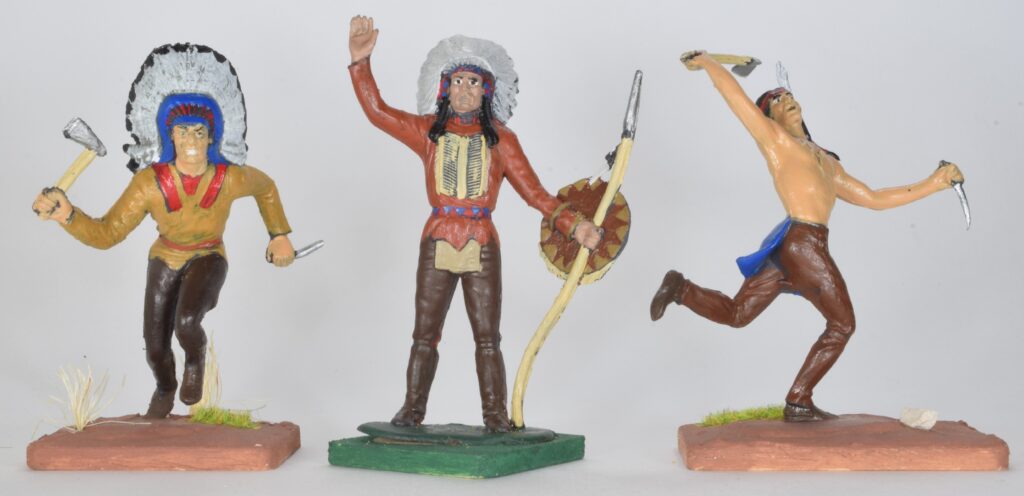
The figures of this American company are very dynamic and elegant.
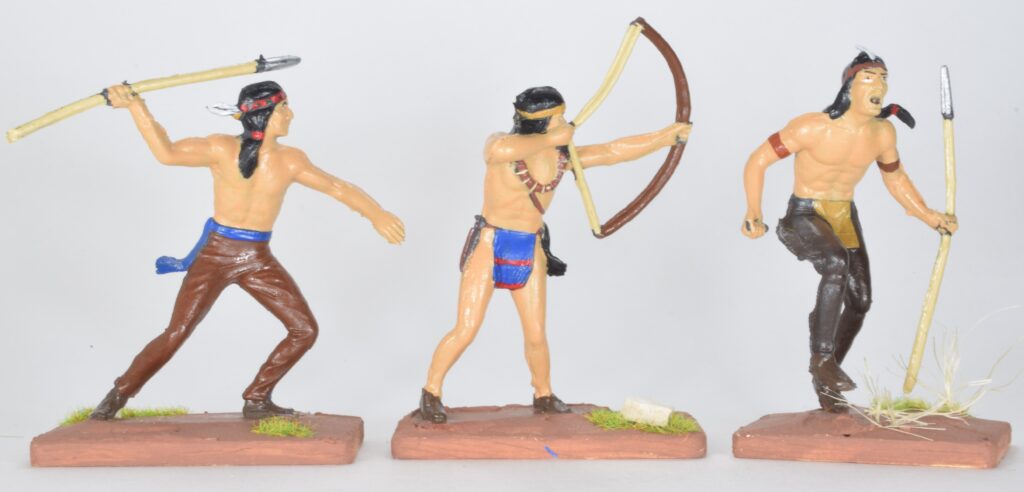
Figures were painted by me and glued to wood bases for increased stability.
Nardi
The figures of this Italian maker are much bigger then the more usual 1/30 or 1/32 scales. The figures are of the swoppet type and made of very colourful plastic.
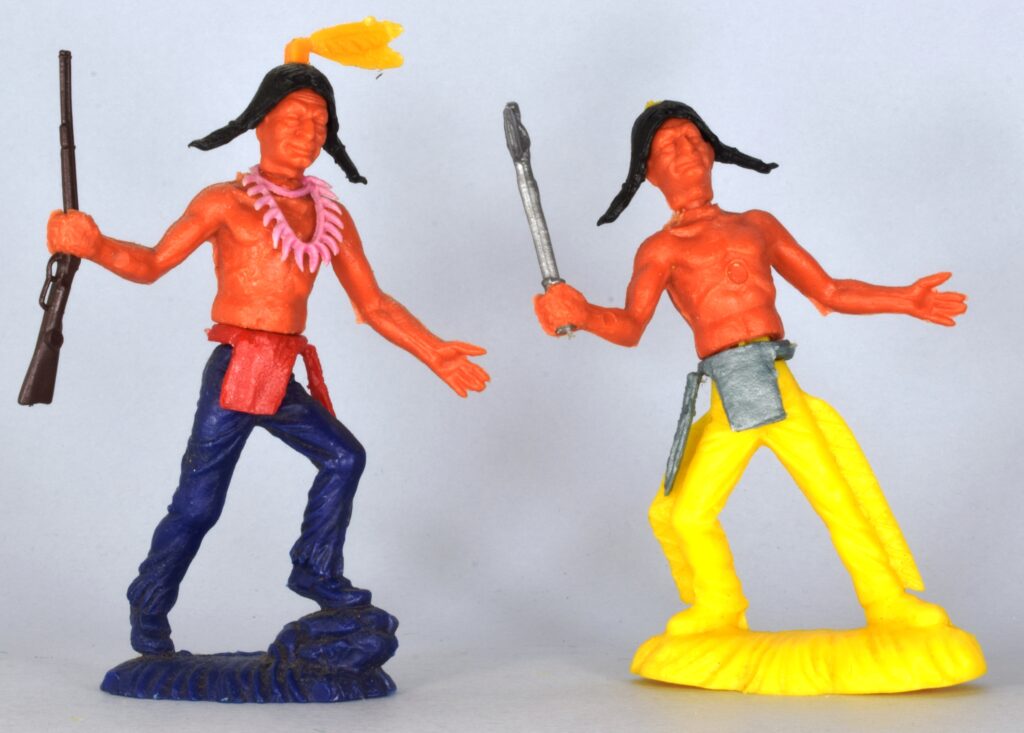
Only the legs are different. The figure in the right had broken feathers and lost the neckless.
TSSD – Toy Soldiers San Diego
This American company produced various Far West references, including Indians from the Apache tribe.
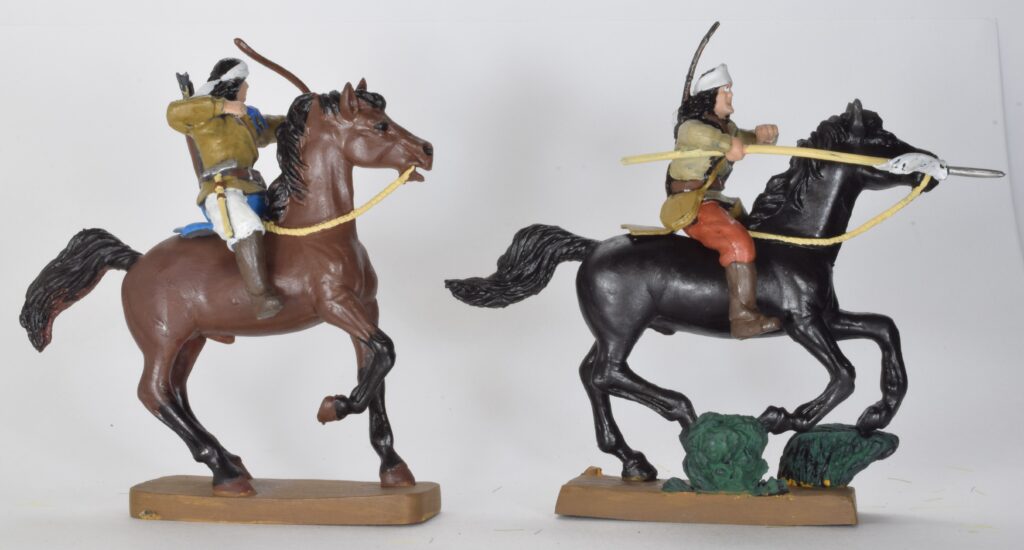
The sculpting is good and the poses are dynamic. Some bases have big bushes to give more support to the horses.
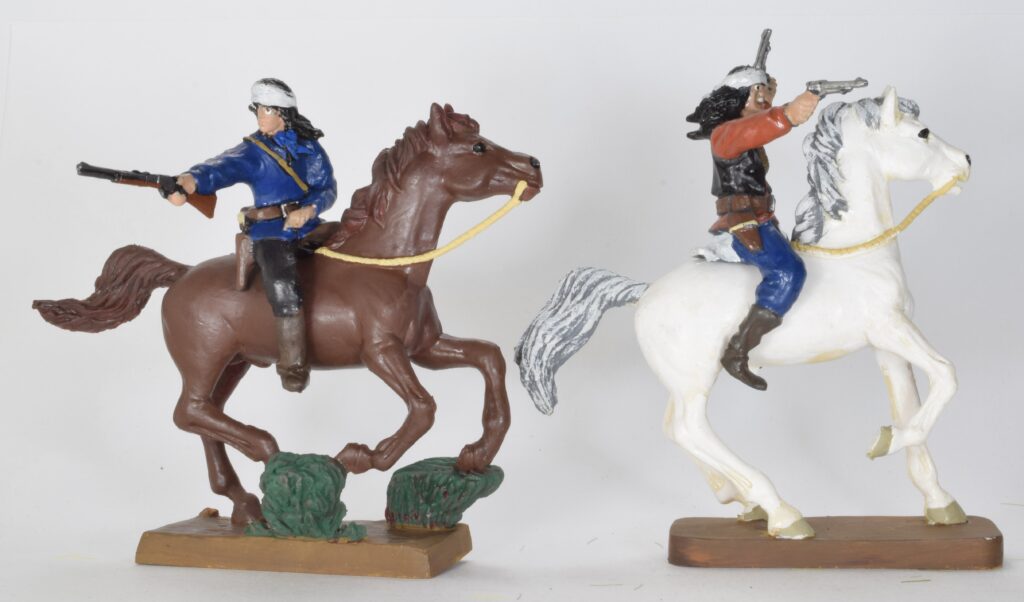
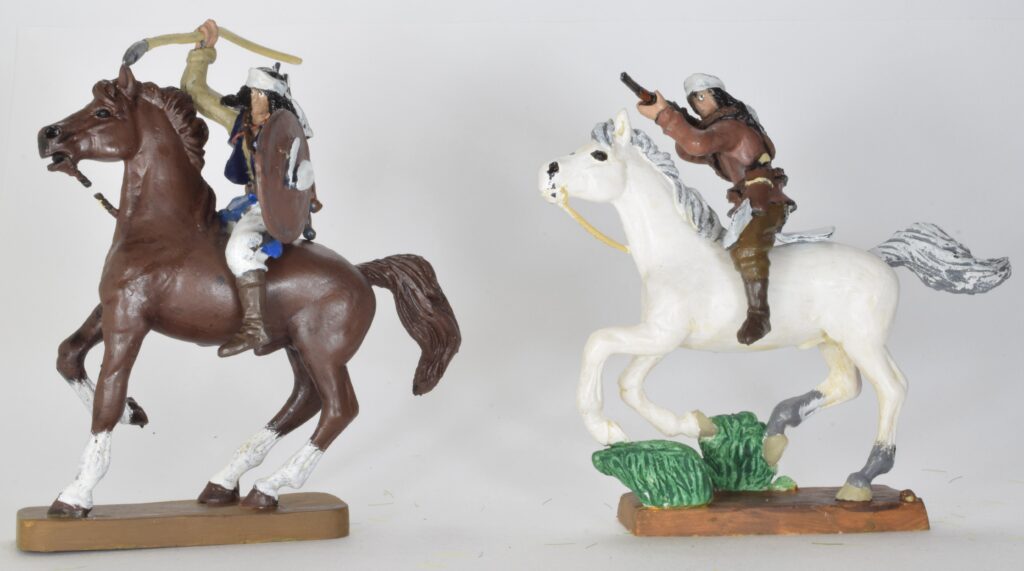
There are 6 different Apaches riding two different horses. If you like the Far West theme, this is a god option to have a different type of Indian.
Timpo
The Far West theme was very strong for this company including a very large diversity of figures.
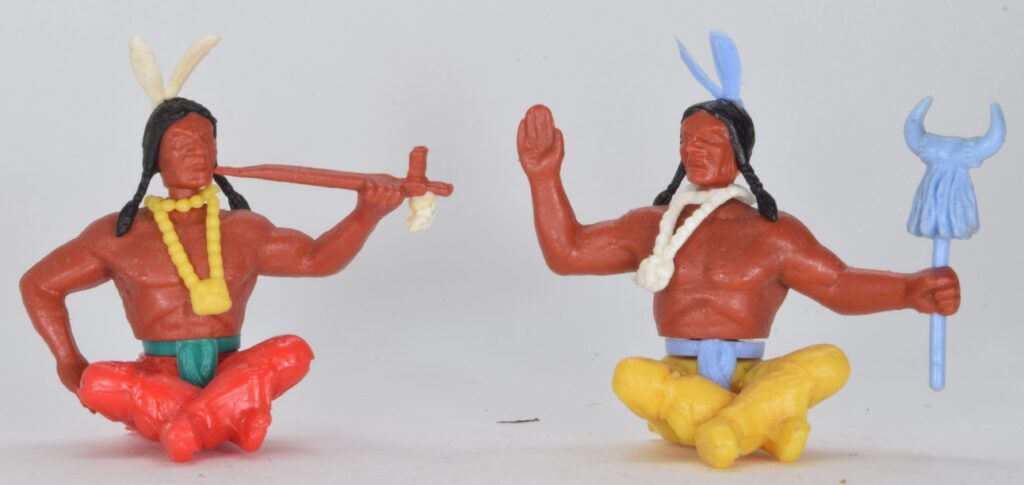
Very peaceful Indians. The smoking figure would be considered politically incorrect nowadays.
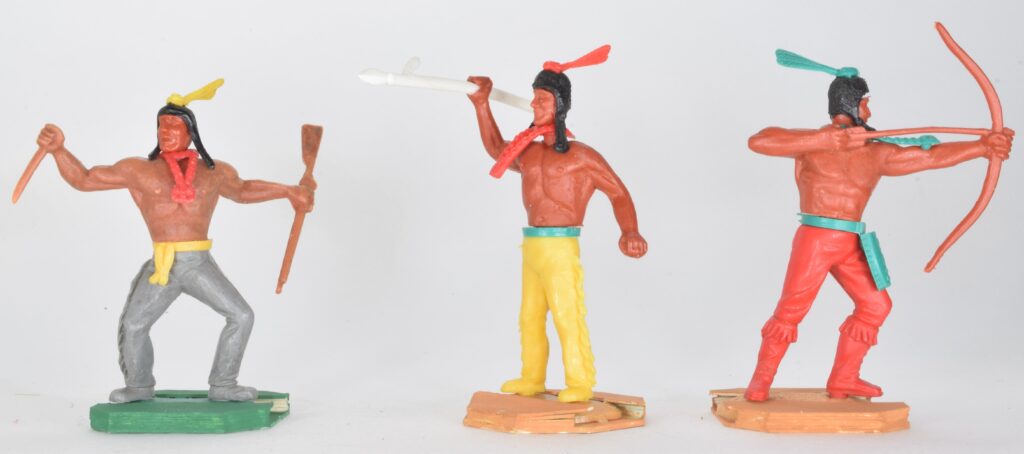
Some weapons are moulded with the torso.
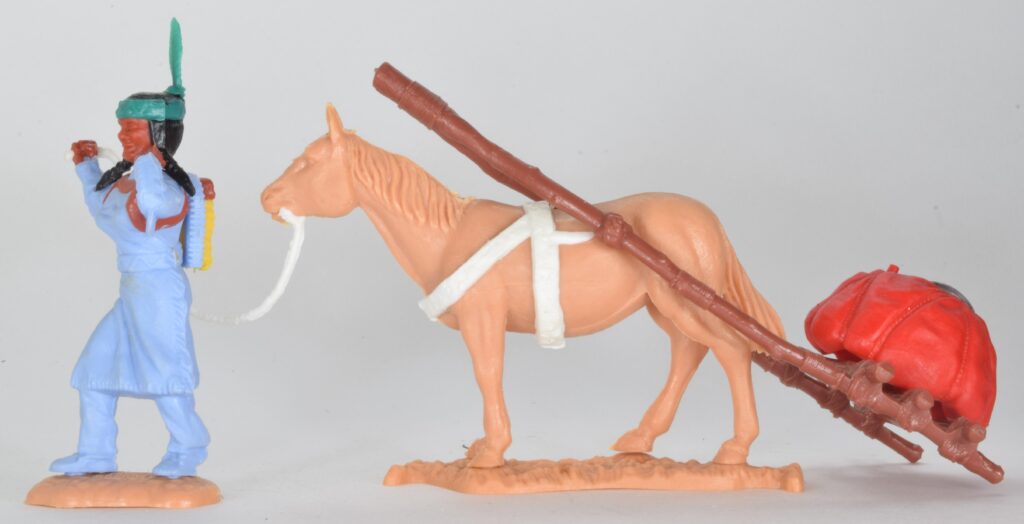
Indian way of transportation before the invention of the wheel.
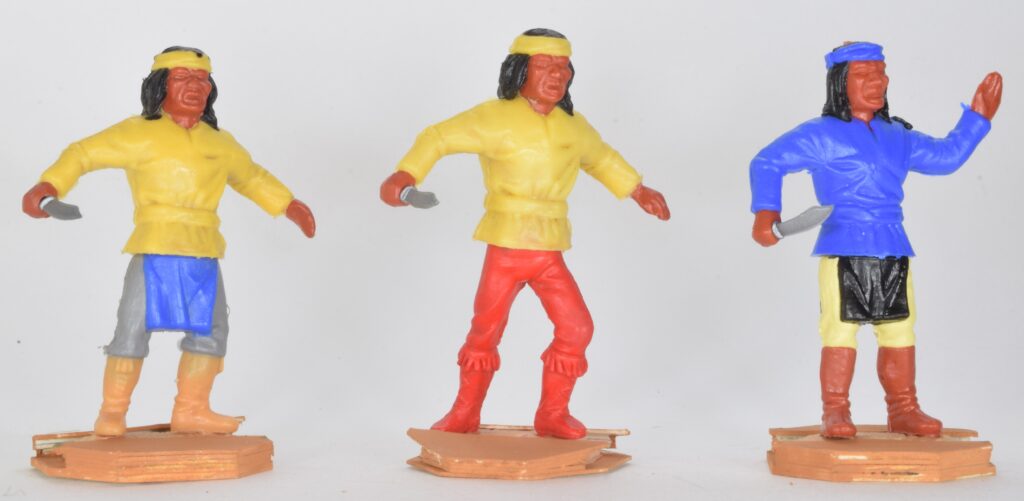
These figures represent the Apache people. They are armed with small knifes moulded separate. Figures were inserted in cardboard bases to increase stability.
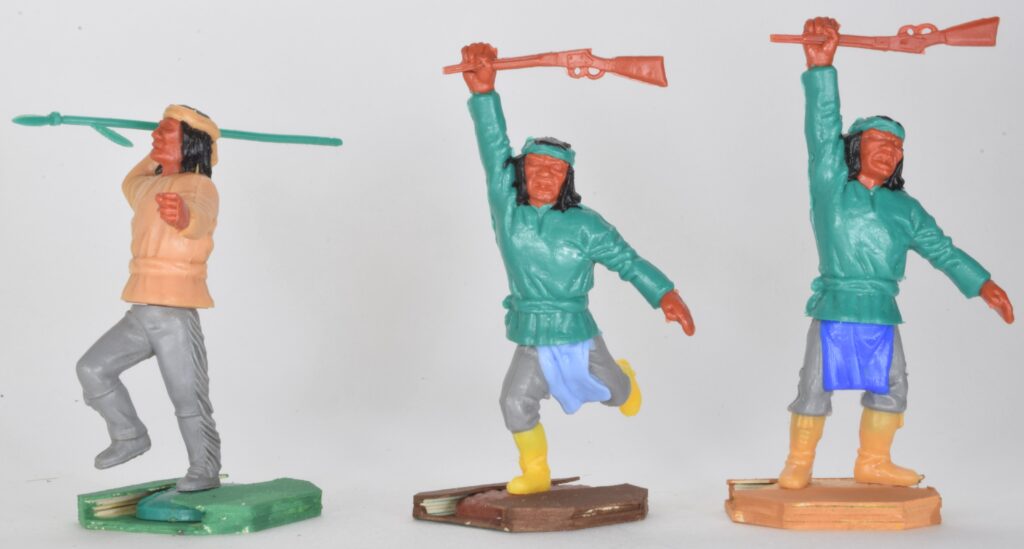
The pose of the second and third figures is a bit strange with the right arm upwards.
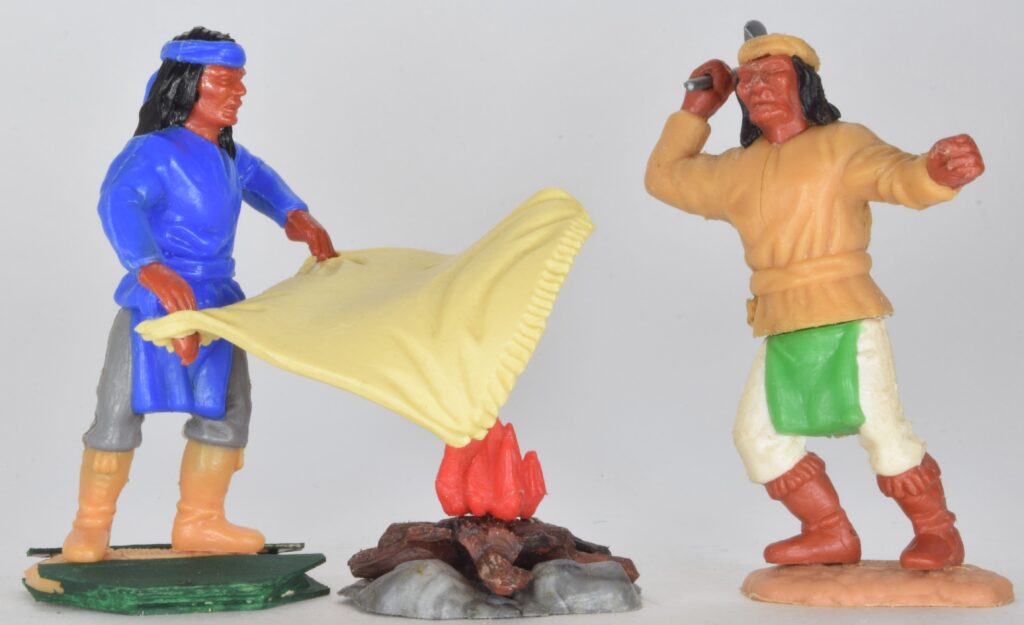
Smoke signals were a way of communication between distant villages.
